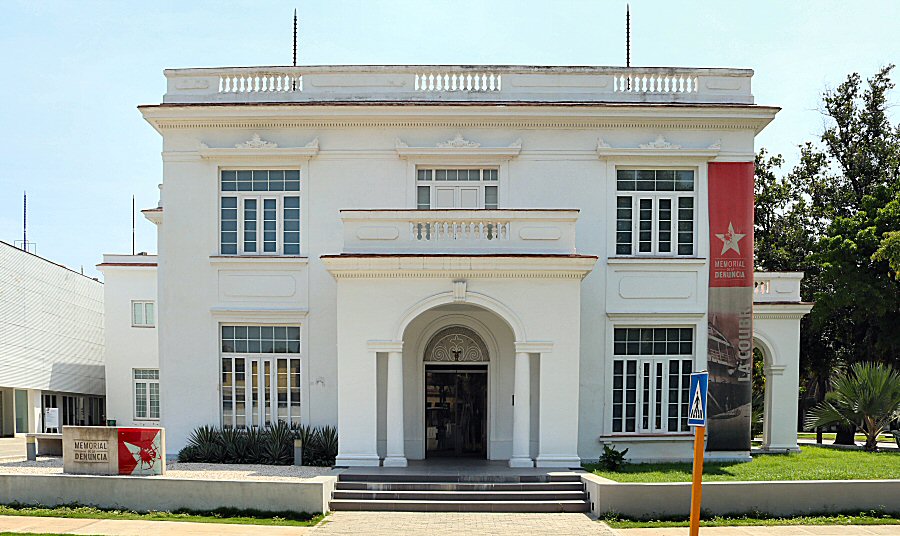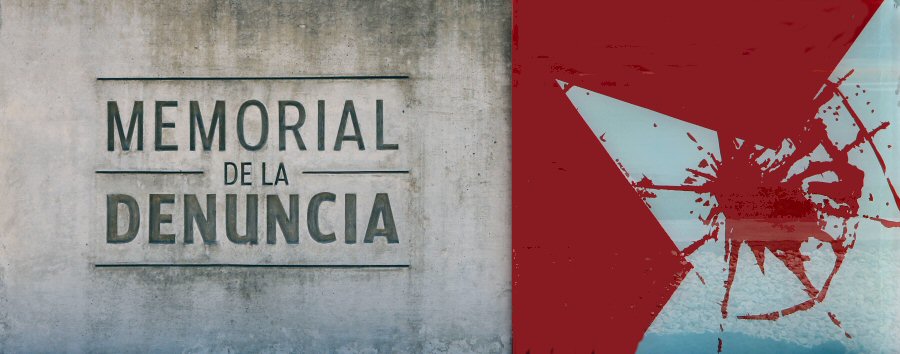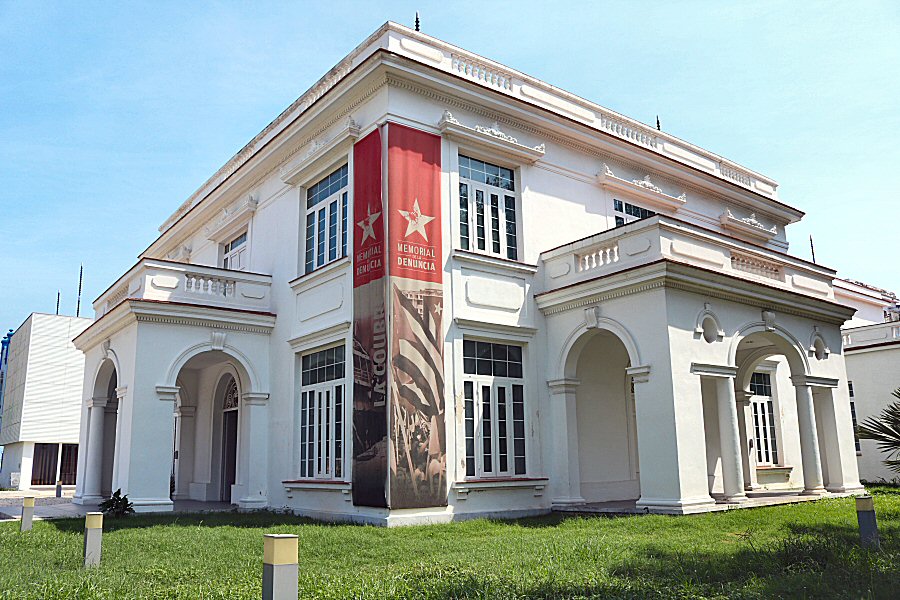
The Museo del Ministerio del Interior is located on the
14th street, between the 5th and 3rd Avenues in the municipality
Playa, about 800 meters west of the exit of the Calzada tunnel.


The building of the current Museo del
Ministerio del Interior was occupied by the State Security
Operations Section from 1959 to 1962. In 1989, the Central
Museum of the Bodies of State Security was inaugurated in the
building, and in 1991, it was renamed as the Museo del
Ministerio del Interior (MININT). Since 2011, it serves under
the name of Memorial de la Denuncia (Memorial of the
Denunciation).
In 2017, the museum reopened its doors with
a new image and a new museology concept to catch the fancy of
the general population. Completely renewed museum focuses
particularly on young generation using the facilities of the
modern technology. The new technology enables the young brains
to make an interactive journey through the tragic events that
led to the change of the regime. The tactile screens,
infographics, objects, materials with holographic effects,
films, all these facilitate to visualize the recent past of the
island in a dynamic way. The Museo del Ministerio del Interior
is a unique contemporary museum of its kind in Cuba.
The museum is a complex consisting of three
adjoining buildings. Two of these buildings were used as
exhibition areas, whereas the third building serves as a
socio-cultural space.
The thematic museum has six permanent
exhibition rooms where the visitor be informed about the threats
to which Cuba exposed after the Revolution, by means of
monographs, documents, articles, objects and multimedia.
The ground floor of the first museum (the
first building) and one room on the upper floor is dedicated to
documents and photos to denounce the state terrorism, a policy
based on violence and terror that was executed systematically to
Cuban people under the protective mantle of the US. At the
entrance of the staircase to the upper floor, there is a
counter, consisting of cubes, that show the total number of the
victims of terrorism against Cuba, calculated by the government,
and it can be updated at any time. The walls surrounding the
staircase is covered with 3.478 small black crosses that
represent the total number of the victims of terrorism against
Cuba. In another room on the upper floor, the theme is the plans
and operations of CIA to weaken the regime in Cuba. The numerous
actions and attacks, operated by CIA and other intelligence
services, affected many lives in Cuba. The sabotages, operated
by the CIA, such as the detonation of the French freighter La
Coubre in the harbor of Havana in 1960 and the blasting of the
Barbados plane during flight in 1976, can be watched by means of
the three-dimensional projection in the audio-visual room,
accompanied by the sounds that are used to experience the
reality as close as possible and the smell of the gunpowder,
filling the room. On the touch screens you can see some
pictures of the corpses and dying people due to the attacks.
The bloody shirts of Manuel López de la
Portilla and Orosmán Dueñas Valero reveal the violence that
these people have been exposed to. Manuel López de la Portilla
succeeded in infiltrating a counter revolutionary organization;
however, the group discovered his true identity and killed him
on the reefs at the northers coast of Havana in 1960. He is
considered the first martyr of the State Security. Orosmán
Dueñas Valero was killed by some Cubans that had stolen a vessel
and were leaving the island illegally in Tarará. He was
disarmed, his hands were tied and then he was killed by
machine-gunshot. Here, you can find also the remains of the
Barbados plane. Different type of weapons that were included in
the plans of the CIA and the Miami groups to assassinate Fidel
Castro are shown on panels and on touch screen.
A huge amount of ammunition under the glass
on the floor is another striking decoration in the room.
There is also a room dedicated to transient
exhibition of plastic arts and a point of sale of books.
In a room of the second building a room,
some articles are shown to lay bare the economic war, carried
out by the leadership of the US, to bring the country to its
knees and to destabilize the social life. Meanwhile, another
room is dedicated to the foreign media that conducted a media
war against the regime in Cuba. The black propaganda was an
essential tool of the US’ policy towards Cuba to instigate the
imbalance in the country. In this context, you will see some
covers of the digital platforms as Diario de Cuba, Generación Y,
Café Fuerte and Cubaencuentro.
The migration issue that is still actual, is
the theme of another room. This sensitive topic was purposely
manipulated by the US to undermine the Cuban government. The US
authorities didn’t hesitate to encourage some Cubans to leave
the country illegally in a dangerous way that ended frequently
by the loss of the lives of innocent people in the ocean. The
Operation Peter Pan was one of the hostile manipulations of the
US, carried out intensively from 1960 to 1962. CIA, in alliance
with the Cuban Catholic Church, spread the grapevine that Cuban
government was working on a law to take all the children from
the age 5 to the age of 18 from their parents. The panic led the
parents to send their children to other countries, so that
almost 15.000 children left the country, most of arriving in the
USA illegally.
On a touch screen you can see bleeding eyes
on the digital map of Cuba to draw attention to the plans of the
CIA to sow diseases in Cuba like dengue fever and shine fewer.
In another room, you will find a rustic
boat, built in 1990s by some Cubans that wanted to flee the
island. The “historical line on the manipulation of the
migration issue” can be seen on touch screens.
The screens show pictures of Cubans carrying
boats, some snapshots from the Elián González Crisis and a page
of the newspaper El Nuevo Herald, announcing a revolt on the
Malecón. Another room has the title: “Our strength is the
strength of the people”.
The third house, located at the bottom of
the two buildings, serves as a multipurpose socio-cultural
place. In the library of the museum the visitor can make his
research, checking the printed and digital media. You can
download the historical documents in his flash memory.
There is also a game room where you can play
games, mostly made in Cuba. Thus, you will have the opportunity
to learn the facts about the history of Cuba interactively while
you play. For example, you can recreate the invasion of Playa
Girón and be informed about the details. You are expected to sit
on the floor, as the room is designed physically so. There is a
stand of the Capitan San Luis Publishing House which deals with
publishing a group of collections closely linked to the themes
that are reflected in the museum, like the Denuncia collection.
A navigation room is put to the service where the visitor will
receive information about his search regarding the topics of the
museum. It is also possible to use the e-mail service in the
room.
There are also a cafeteria and a bookstore.
The space is used for concerts, conferences
and book presentations regularly.
Even though some sentences on the walls are
in English, the touch screens and the document copies are in
Spanish and there is not any information about the tragic events
that Cuba had to expose to. Thus, a moderate visitor that has
not any knowledge about the history of Cuba after the
Revolution, would find the museum less interesting.

